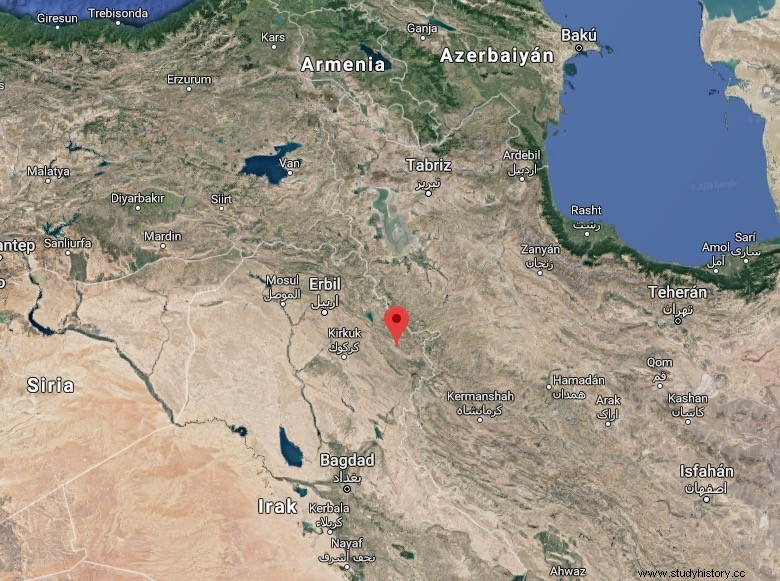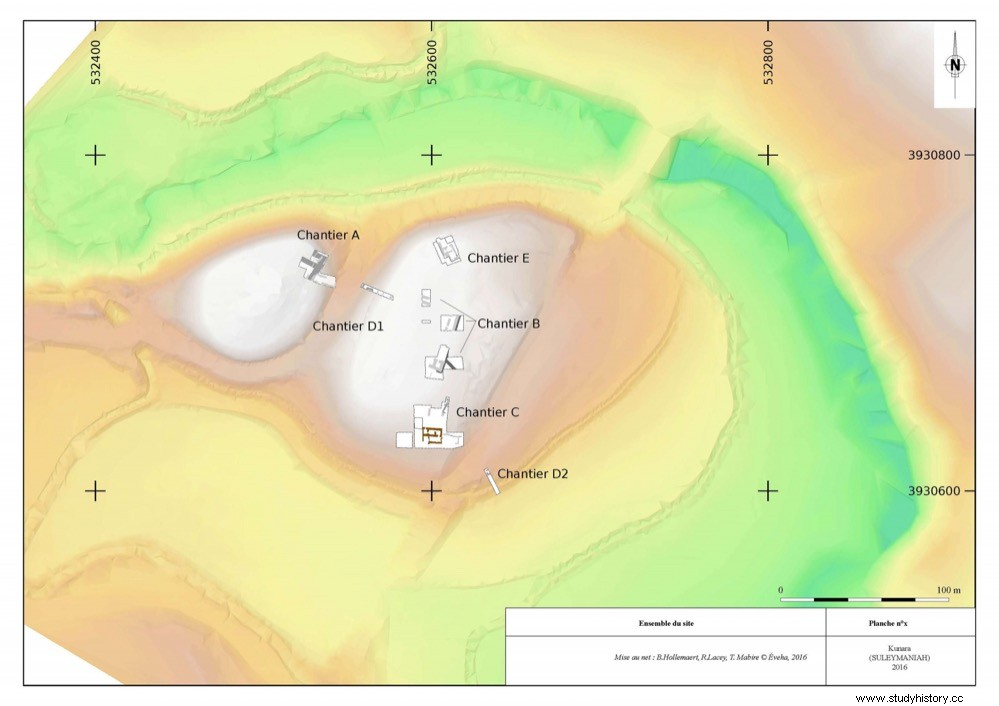Archaeologists from the French mission who have been working since 2012 at the Kunara site in Iraqi Kurdistan have brought to light the remains of a hitherto unknown city some 4,000 years old that prospered on the borders of the first empire Mesopotamian, the Akkadian.
Located in the foothills of the Zagros mountains on two small hills on the banks of the Tanjaro river, and about 5 kilometers from Solimania, the capital of Iraqi Kurdistan, the city of Kunara provides evidence of a hitherto little-known town, probably the center of a kingdom that remained on the periphery of Mesopotamian influence.
According to Aline Tenu, who leads the archaeological mission, large stone foundations, tens of meters long, have been discovered both at the top and bottom of the site. They apparently date from the end of the third millennium, around 2200 BC. In other words, the monumental structures were erected more than 4,000 years ago.

Evidence of ranching, irrigation, and agriculture was also found, suggesting a prosperous city inhabited by mountain people on the western border of the Akkadian Empire.
Among the finds there are numerous clay tablets of about 10 square centimeters, with cuneiform writing.

According to archaeologists, the inhabitants of Kunara may be related to the Naram-Sin stele that is exhibited in the Louvre Museum and shows this ruler triumphing over a mountain people, the Lullubi , which the Mesopotamians represented as barbarians. Aline Tenu believes that it is possible that this city was one of the capitals of the Lullubi .
If the theory is confirmed, it would completely change the conception of these as an isolated people, since the excavations revealed evidence of tools resulting from trade with distant regions, such as Anatolia and the Caucasus.
That they were in contact with other areas where the Bronze Age had begun to develop is illustrated by the presence of a series of molds for metal blades.

The finds also include various pottery fragments, some decorated with zoomorphic motifs, bear and lion bones (perhaps from hunts), and the remains of two horses, an exceptional mount from the third millennium.
Remains of goats, sheep, cows and pigs suggest the existence of a cattle breeding system. And the presence of an irrigation network south of the city evidences the cultivation of cereals, especially malt and barley.

All this activity was recorded by the Kunara scribes on clay tablets. It seems that they had a good knowledge of Akkadian and Sumerian writing. In fact, the first tablets analyzed, found in a building in the lower city, record a large number of inputs and outputs of flour.
They also mention titles like Ensi (king or governor) and Sukkal (high dignitary), suggesting an administration based on the Mesopotamian model.
Another group of tablets found in a different area provides information on grain stores, some with capacities of more than 2,000 litres. They are important volumes that confirm agricultural activity, with a surprising feature:the unit in which the measurements are cited is not the Imperial Akkadian Gur , but the Gur of Subartu , hitherto unknown. For archaeologists, the use of an original unit of measurement resonates as an act of independence .

Names such as Khabaya also appear on the tablets. or Ninarshuna which are unknown to Assyriologists. Although written in cuneiform, these names do not sound Mesopotamian , which suggests that Kunara had its own language. The only thing no tablet mentions is the original name of the city, according to Aline Tenu, which was apparently devastated by fire 4,000 years ago and has never recovered.
